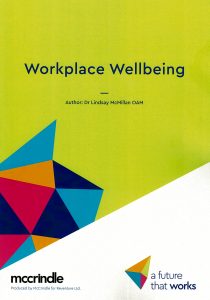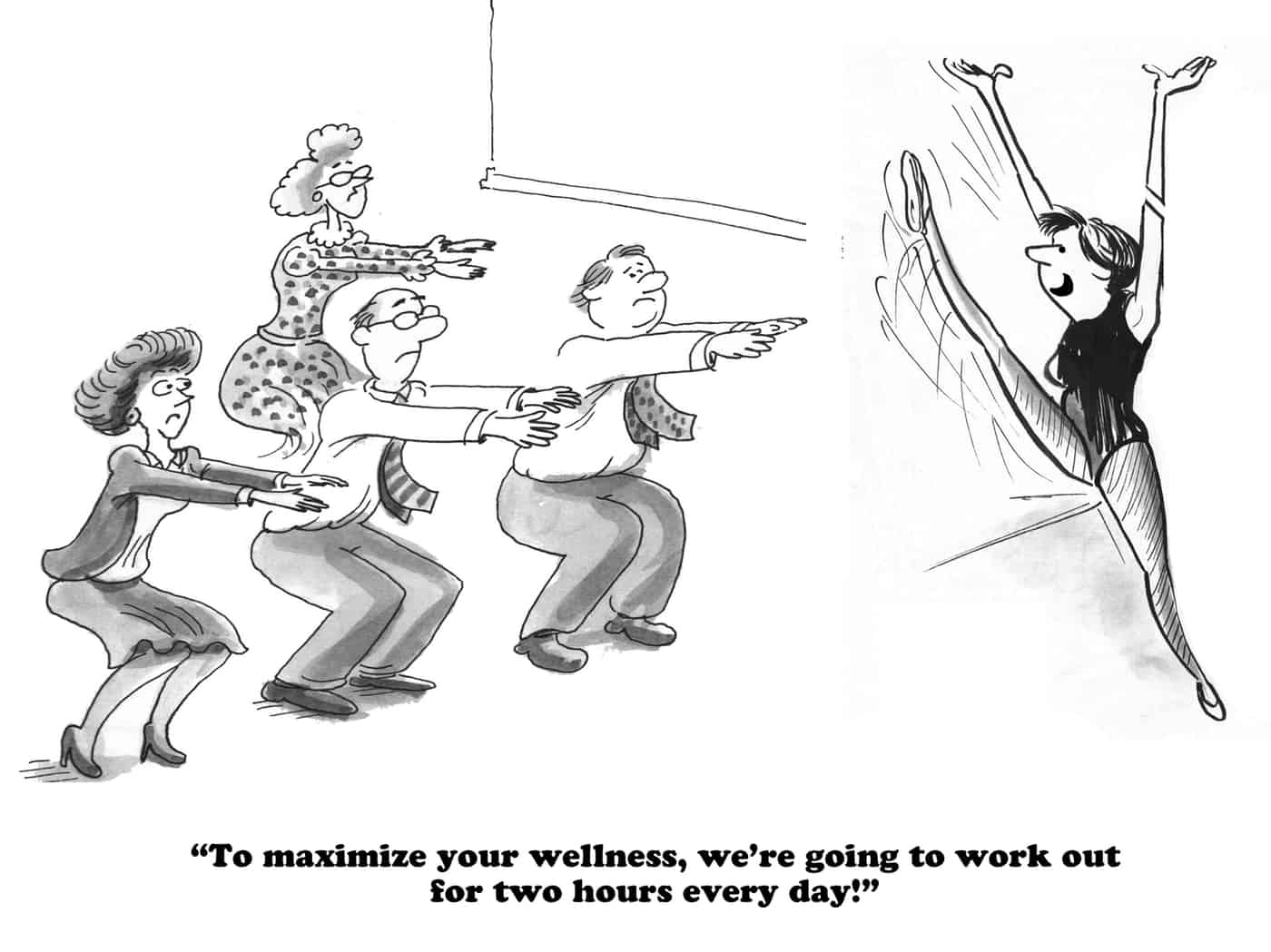Yesterday, one of my LinkedIn posts reached over 20,000 impressions. The post concerned new research that questioned the effectiveness of corporate wellbeing programs. Some responses were febrile even though they had not read the open-access article! The points raised in the research were not new. Some have been covered in this blog previously, but the New York Times raised the question of the viability of corporate wellness programs in 2020.
Tag: wellness
New workplace wellbeing report is what it is
 Converge and Reventure launched their latest research report into workplace wellbeing on 23 November 2017. The report, not yet available online, is based round a survey of just over 1000 Australians comprising over 80% full-time or part-time employees, The report has been produced as a guide for businesses and may be of some interest to health and safety people but is of limited application.
Converge and Reventure launched their latest research report into workplace wellbeing on 23 November 2017. The report, not yet available online, is based round a survey of just over 1000 Australians comprising over 80% full-time or part-time employees, The report has been produced as a guide for businesses and may be of some interest to health and safety people but is of limited application.
Definition
Most research reports include a clear statement of the aim of the research or a definition of the concept being investigated.
Wellness programs need to fit business management
Recently Corporate Bodies International circulated an annual membership offer (no costs listed in this link) to its Australian market. It said:
“Employees and their families have access over to over 300 live webinars and exercise classes, monthly health videos, posters, online GP, Dietitian and Exercise Physiologist appointments – from anywhere in the world, just to name a few of the inclusions. All of this for little more than the cost of a cup of coffee.”
It is the last line that requires a bit more consideration as no program only costs just what marketers claim.

The CBI offer included a link to a flyer about its Healthy Bodies Subscription which involves $A1,800 per annum for companies with less than 100 staff to about ten times that for a much larger number of staff. The services extend from webinars, posters for toilet walls and newsletters to “GP2U Online GP Access” which involves:
“Diagnosis, immediate prescriptions, specialist referrals and medical certificates, all from the convenience of the office. Designed for critical workers or the executive team, minimising work disruption”.
For an organisation that has no occupational health and safety (OHS), Human Resources or well-being resources, purchasing a package like this may be financially attractive but it can also lock one into a pool of medical advisors that could generate conflicts later on with, for instance, insurers, legal representatives, project partners and others. The provision of “immediate prescriptions” may also be a benefit that needs some further investigation – prescriptions by who? For any medication?
A company needs to decide whether it wants to be in total control of the medical services it may offer, or may need to offer, to its employees and whether subscriptions are sufficiently responsive to meet the fluctuations that occur with any workforce and with the business’ profitability.
It is also worth considering whether employees can choose to opt-out and continue being diagnosed or treated by their own physician. How would such a corporate subscription allow for this worker right? If the worker opts out, would this be seen as being disloyal? Would this reduce the number of workers covered by the subscription and affect the overall cost to the company?
Owning the welfare program for one’s own employees allows a company to shop for the best deal and to tailor the program to match the fluctuations of the company’s needs. Would this cost more than the subscription fees in the table above? Almost certainly, IF the subscription cost was the only cost involved. It is important to look beyond cost to operating costs like management control, good governance and due diligence – to the broader context to which occupational health and safety law is pushing Australian companies. These factors are rarely costed and are frequently overlooked, probably as a consequence of not being measured. It is a shame that such “intangibles” are accepted as part of economic assessments but are dismissed in relation to OHS.
Stress advice that builds on what came before
In occupational health and safety (OHS), as in most things, it is possible to learn more from what is not said than what is said. Recently WorkSafe Victoria released a guidebook for employers on “Preventing and managing work-related stress”. Given the current community focus on stress, health and wellness, discussion of this document’s release has been quite muted. Part of the reason is that, in some ways, the guidebook does not fit with the contemporary health and wellness push.
WorkSafe has been publishing guidance on workplace stress and its subset, workplace bullying, for well over 20 years. It’s Stresswise publication has been a de facto reference on the hazard and the workplace bullying changes initiated by the ACTU and implemented by WorkSafe Victoria, emerged from. ACTU surveys of its members specifically on workplace stress.
Part of the significance of investigating workplace stress is that the major causes are institutional, that is, the way businesses are managed rather than with the individual’s capacity to cope. It is here that the WorkSafe guidebook conflicts with the common approaches of the wellness advocates.

